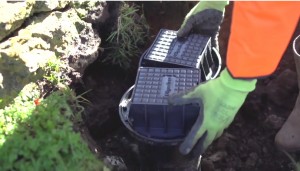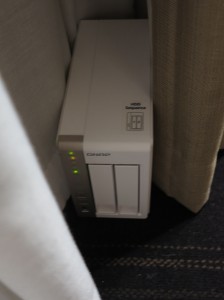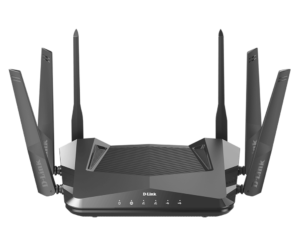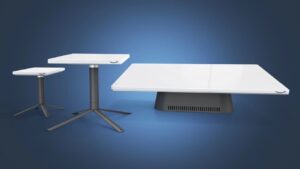What is independent install

As more fibre-to-the-premises connections become ubiquitous, there will be a call towards independent-install as a service provisioning option in order to save costs for subsequent FTTP deployments
Independent installation of fibre-to-the-home / fibre-to-the-premises broadband Internet is where the installation and provisioning of this service doesn’t require a technician employed or contracted by the infrastructure provider or ISP to come to your premises.
Most likely these kind of FTTH / FTTP installations will take place in an environment where the consumer owns the optical network terminal and can replace it with equipment that suits their needs better. As well, such equipment will be typically in the form of desktop equipment that is the size of a typical home-network router.
Independent install approaches have been seen to be successful with ADSL and cable broadband Internet due to the copper infrastructure being ubiquitous in most households. In a lot of cases, this has allowed ISPs and telcos to offer cheaper broadband Internet to the masses.
New connections
A new connection to a premises that hasn’t been previously connected would require a technician employed or contracted by the infrastructure provider or ISP to run a connection from the street to the building or premises. They would be required to install a “demarcation point” on the premises where the infrastructure provider’s legal responsibility ends as far as the infrastructure goes.
Some ISPs or infrastructure providers may supply and install the fibre-optic cabling from the demarcation point to a wall socket close to where you are to have your optical network terminal and home-network router. Here, this would be part of the installation cost for a new connection to an existing premises.
On the other hand, an independent third-party installer with fibre-optic skills would install fibre-optic runs as part of electrical / AV / data cabling during the construction of a new building or full-on renovation. This would be paid for by the building owner as part of the project costs.
As well, there will be pressure on building developers to install the necessary infrastructure for fibre-to-the-premises Internet as a standard offering. This will be exerted by customers, urban planners, regulatory authorities, competing developers and the like to have that project set up for today’s online expectations. In this case, electricians engaged by the developers will be required to be skilled in FTTP fibre-optic installations.
Existing connections

The AVM Fritz!Box 5530 is one of these home-network routers with a connection for fibre-optic internet in the form of an SFP plug.
As fibre-to-the-premises broadband takes hold, there will be more of the existing connections to this kind of infrastructure. This will be where independent install will earn its keep. It will also include premises that are part of a previously-mentioned building development that have been wired for fibre-to-the-premises.
Self-install, including wires-only / BYO setups
Self-install is where there is cabling to the premises and a wall socket installed therein. The customer picks up the equipment they need and, perhaps, a flylead or adaptor from the ISP’s bricks-and-mortar presence or a retailer. Or this equipment is delivered to the customer’s premises by post or courier.
Then the customer unpacks the equipment and installs it themselves. They may find that the ISP or infrastructure provider has to remotely activate the equipment and set it up for the Internet service.
If the arrangement is described as a BYO or wires-only setup, the equipment isn’t bundled with the service. Rather the customer buys the equipment from the ISP or infrastructure provider or a technology retailer. They can take the equipment between premises rather than leaving it behind when they move.
The BYO or wires-only setup would be pushed for in the name of competition and innovation. This is due to the idea of offering higher-performance ONT modems or ONT/router combo equipment a.k.a. fibre-optic gateways that is equivalent to modem routers. As well, it would be pushed as a lower-cost service-provisioning option due to the ISP or telco not needing to have customer-premises equipment on their books as a rapidly-depreciating asset including the cost to warehouse the equipment, nor needing to have technicians drive to the customer’s premises to deliver or install the equipment.
Should the equipment fail, the customer would have to disconnect the equipment and organise to have it repaired. Here, they would send the equipment to the ISP or infrastructure provider if it is bundled with the service. Or they would send it to a repairer if the equipment isn’t bundled, such as a BYO equipment deal. The same situation also applies where a technical upgrade is taking place and the customer needs to use newer equipment.
Similarly, self-install especially BYO / wires-only setup may permit a customer to take the equipment with them when they move to premises where there is already the FTTP infrastructure therein. This would appeal with people who purchase ONT modems or ONT/router units that are about higher performance.
Independent technician install
An independent-technician install relies on a suitably-trained technician engaged by the customer to install the fibre-optic wiring between the demarcation point and where they want to install their equipment.
Such technicians would be able to move the fibre-optic connection on the customer’s side of the demarcation point if you had to reposition it to a newer location. The technician would also be able to do repairs on the fibre-optic cabling if it failed or was damaged.
If you are renovating your home or working on a new-build premises, having an electrician or AV technician who is skilled with fibre-optic handling will come in to its own. Here, you have the same tradesperson doing the fibre-optic cabling as well as other copper-based cabling runs, whether AC wiring, RF for a TV aerial or master-antenna TV setup, AV for multiroom audio and video or Ethernet cabling for your home network.
What is needed
Demarcation point
The fibre-to-the-premises installation has to have a distinct demarcation point at the user’s premises. This delineates the point of responsibility between the service/infrastructure provider and the premises owner/occupier as far as the fibre-optic infrastructure is concerned.
This would have to designed so that a skilled independent technician can connect a fibre-optic installation to this point when they have installed it. It could be feasible to have this support a “multi-fibre” connection with a “mutual / independent / open” demarcation point for environments that support infrastructure-level competition, something that is already established in France. That is where multiple street-side fibre connections are connected to this point and a technician engaged by the service provider the user is contracting with switches the user to that infrastructure.
Of course a consumer may want wall points for two or more infrastructure-level fibre connections. This would be called upon by businesses, for example, who subscribe to service providers on different infrastructures for increased fault tolerance of their Internet connection. In these cases, there would be two or more of the demarcation points on the premises in addition to two or more wall points or one multi-fibre demarcation point is used to serve two different outlets with connections to different infrastructure providers.
Multiple-premises buildings like apartment blocks or shopping centres may have the demarcation point in the telecommunications equipment room, typically in the basement or on the ground floor. This may be held as the building demarcation point while the cabling is maintained by technicians appointed by the building committee or owner. Some setups may then require a second demarcation point per premises with this being installed in a cupboard therein. In that area, cabling to the wall socket may be serviced by a technician engaged by the premises owner or occupier.
To assure access to infrastructure-level competition, there may be the idea of having multi-fibre connectivity to each premises with the premises-level demarcation point being where a household is switched between competing infrastructure providers.
Wall point
As well, there would be a requirement to have a fibre-optic wall point so that customers can easily connect and disconnect their optical network terminal. This would make self-install or “BYO device” arrangements work properly because the customer would have to be able to easily connect equipment that they supply.
Such wall points would be required to be installed where the customer wants their equipment placed. There will be instances where a customer wants two or more wall points that are connected to different fibre-optic infrastructure providers so as to provide a fault-tolerant setup.
Rugged flylead with rugged plugs
Then there would be the need for a rugged flylead with rugged plugs that the customer uses to connect between an optical network terminal (fibre optic modem) and the wall point.
Such cables and plugs would be about being able to be connected and disconnected easily by anyone and not being at risk of damage. It may also be about having these cables offered at lengths that suit the customer’s needs. These would be supplied through retail outlets, packaged with the ONT equipment or supplied by the installer. Most likely this will be in the form of the Single Form Pluggable connection on the equipment side like with the AVM Fritz!Box 5530 advanced home network router.
Why independent install
Having independent install as part of a fibre-to-the-premises setup for home and small-business users would become an economical measure for infrastructure providers. This makes a lot of sense with existing installations where a premises has FTTH / FTTP cabling to the point where a user wants to set up their network equipment.
Here, a technician doesn’t need to come out, supply and install an ONT modem in the premises; avoiding the need for the customer to book an appointment and make sure a responsible adult is waiting around to welcome and supervise the installer.
It would also permit the customer to choose their own kind of FTTP optical-network-terminal equipment. This is more so where the ONT equipment is part of a router and there is the desire to offer innovative better-performing equipment that has functionality that is desired by the customer. As well, manufacturers are encouraged to design smaller desktop units that fit in with the customer’s premises.
This also applies to installation modifications where a customer engages a trained technician to do the job. For example, the customer could engage an electrician who has been trained for AV, telecommunications and other similar work to do any “customer-side” work like moving their equipment or even to wire up a new building or premises.
The role of the infrastructure-supplier’s technicians would be reduced so as to “pull” the fibre-optic cabling from the street to the network demarcation point on the building and maintain that connection. As well, in an environment where there is competing infrastructure providers, the technicians supplied by the competing provider can know where to connect in their cabling to the building’s cabling infrastructure.
The disadvantage associated with independent install for FTTH setups is that the infrastructure provider would lose quality control over the installation. This may not necessarily apply to a self-install arrangement where the goal is to connect customer-supplied equipment to existing connections. But it would apply where new fibre-optic cabling is installed or an existing fibre-optic cabling installation is modified by a third-party technician.
Conclusion
As more countries take on fibre-to-the-premises broadband Internet, there will be the question about making sure that independent installation options are part of the course. This is more so as more premises become wired up to FTTP and the prospect of self-install where customers install replacement or improved equipment themselves becomes appealing as a way for operators to save money.













![German countryside - By Manfred&Barbara Aulbach (Own work) [CC-BY-SA-3.0 (http://creativecommons.org/licenses/by-sa/3.0) or GFDL (http://www.gnu.org/copyleft/fdl.html)], via Wikimedia Commons](https://homenetworking01.info/wp-content/uploads/2014/08/Feldweg_in_der_Nähe_von_Diemelstadt-300x199.jpg)